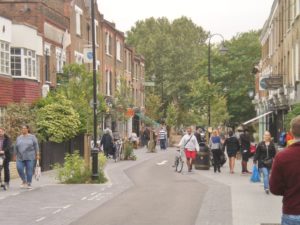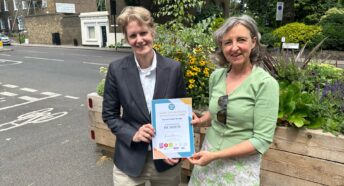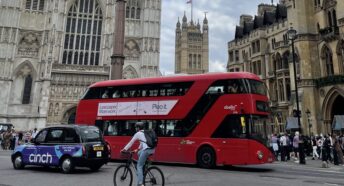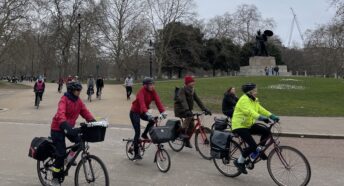Why London needs to be a ‘compact city’
A key aim for CPRE London and the CPRE family is to maintain Green Belt protections which are designed to halt urban sprawl.
Building out into Green Belt is the worst possible option for London. It is a lose-lose scenario. We lose our countryside and we create a high-carbon, car-dependent, unhealthy city – a sprawling city. London’s Green Belt is Our Climate Safety Belt. But London’s Green Belt is currently facing unprecedented threats from boroughs intent on removing green belt designations for development rather than using plentiful available brownfield sites.
Urban sprawl is low-density development, outside city boundaries, unable to support local buses, jobs, shops and services. It relies on cars and correlates with increased energy use, pollution & traffic congestion. It increases transport costs & social isolation, and leads to loss of countryside, destruction of agricultural land & wildlife habitat and the creation of high-carbon, inefficient towns and cities.
We advocate instead for ‘compact, efficient cities’ with strong Green Belt protections, which are low-carbon, where people get around by public transport, walking and cycling and can live close to jobs and amenities, and where parks and green spaces are protected for health, recreation, sport and nature. We create compact cities by using land efficiently, recycling sites in need of regeneration, using space better and moving away from car-use which is space-inefficient and has other unwelcome impacts like air pollution and noise.
What we’re doing to ensure London is built as a compact city with Green Belt protections maintained
- Advocating for Compact Cities We show why “To save the countryside we have to save our cities”. We point to the social and environmental down-sides of low-density development; seek to allay fears about higher density development, showing it saves space, is not the same as high rise (Double the Density, Halve the Land Needed) and can provide significant benefits to communities (10 reasons higher density living is good for communities).
- We fight to save Green Belt. We work with local campaigners where both councils are looking at removing Green Belt designation from large areas of London’s countryside to make way for development, despite plentiful availability of brownfield land. Beyond the GLA borders (recognising that sprawl in London’s Green Belt will have
 a huge negative impact on London) we work with the London Green Belt Council and other CPRE branches to save green fields from development. Quarter of a million new homes planned on greenfield land, report warns.
a huge negative impact on London) we work with the London Green Belt Council and other CPRE branches to save green fields from development. Quarter of a million new homes planned on greenfield land, report warns. - Our Space to Build work demonstrates why we don’t need to build on Green Belt and shows there is plenty of brownfield land in London to accommodate development: part of our work involves demonstrating where there is space to build.
- Our Healthy Streets work focusses on delivering sustainable transport which is the key to building a compact city including coordinating London’s Healthy Streets Scorecard coalition. What connects rural England and ‘healthy streets’ in London? We have also shown why building car-dependent development in London’s Green Belt will mean we end up Driving in Circles with 5 million extra car journeys per week.








